Probably you are wondering how to keep your electrical systems safe. Well, we have an answer for you – install a switchgear.
But, what is a switch gear, what does it do, how does it work and which type should you choose?
These are some of the questions we will answer in this guide.
So, before choosing your next switchgear, read this guide:
What is Switchgear?
This refers to an electrical system component that monitors, regulate, and safeguards your electric network. It involves circuit breakers, fuses, isolators, and relays that assist in protecting, controlling, and metering electrical circuits. Switchgear is used to detect faults, isolate faulty sections, and restore normal service.
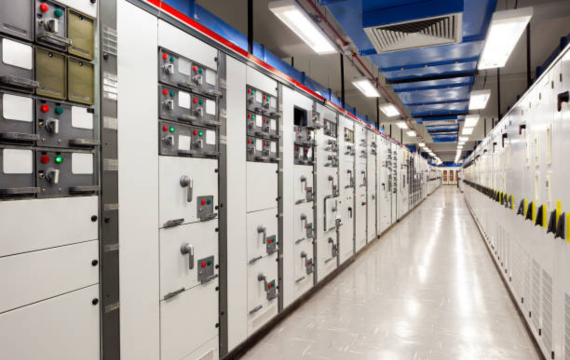
Importance in Electrical Systems
· Control
You use switchgear in order to regulate the flow of electrical energy within your circuit. It lets you schedule the switching operations and distribution of load to take place, thus managing where power should go. This control capability assists you in sustaining a good flow and preventing overloads
Also, it guarantees that every segment of your system runs optimally. Switching gear allows automatic and manual control of electrical networks and enables changes to be made to a circuit immediately.
· Reliability
Turn to switchgear to increase the dependability of your electricity supply. It also helps to identify and prevent any possible disruption, hence maximizing time usage and effectiveness. With switchgear, you are assured of a power supply regardless of any fault or any other unpleasant situation.
This reliability is important in ensuring that vital processes are not interrupted, for instance, in industries, hospitals, and computer systems. With quality switchgear, you build an excellent electrical system, the probability of failure and the costs associated with it are minimized.
· Measurement
With switchgear, you are also able to measure electrical parameters like voltage, current, and power. This data is useful in preserving the optimum operation and efficiency of the system that you are using. This way, you can predict problems first, determine the most suitable time for maintenance, and maximize the functioning of your system.
It also assists you in maintaining regulatory compliance while enhancing safety levels in your electrical systems. When it comes to switchgear, you hold all the facts crucial in maintaining the operation of your system.
· Regulation
Switchgear enables you to change voltage levels and also ensure that power quality will be maintained in the electrical system. This way, you reduce the risk of damaging your equipment as well as promote usage within parameters that do not compromise its functionality.
Good regulation protects your equipment from problems such as voltage sags, surges, and harmonics that are known to harm your equipment.
The application of switchgear means you always deal with a good-quality electric flow, extending the durability of your electrical systems. This regulation capability is important for some production lines and sensitive/critical equipment.
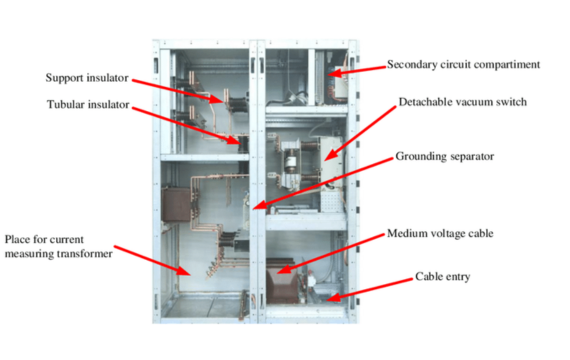
Components of Switchgears
Circuit Breakers
Circuit breakers that are installed in your switchgear help to protect your electrical circuits from overloads or short circuits. They have the ability of breaking the flow of electricity to avoid circulation when there is a fault. The following are common types: Air blast, oil immersed, SF6, vacuum circuit-breakers, depending on the voltage level you wish to use.
While air circuit breakers rely on air to cad the arc, oil circuit breakers rely on oil to do this. SF6 circuit breakers rely on sulfur hexafluoride gas, and vacuum circuit breakers rely on vacuum. Routine circuit breaker management includes testing the trip mechanisms, examining for wear, and guaranteeing that they are free and running.
Fuses
In your switchgear, you employ the fuses to offer you overcurrent protection. Fuses are quite basic and comprise a metal wire or strip that melts when excessive current occurs, thus breaking the circuit. The available choices of fuses include cartridge fuses as well as High Rupturing Capacity (HRC) fuses.
While cartridge fuses are usually used in low-voltage circuits, HRC fuses can be used in high-voltage systems since they interrupt high fault currents. The uses of fuses also include in homes, offices, and industries and various other electrical installations. Their functioning is quite simple and clear, if a fuse has blown, then you should replace it.
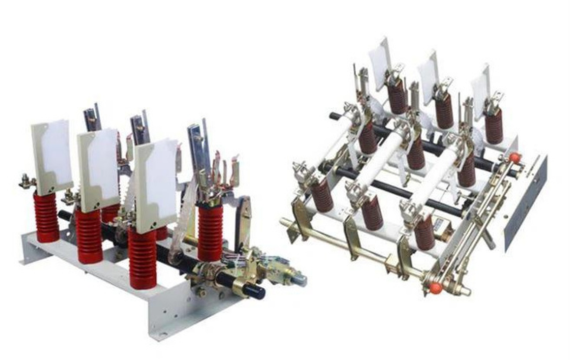
Isolators and Disconnectors
In your switchgear, you employ isolators and disconnectors to de-energize sections of the power system meant for maintenance or repairs. Isolators are types of switches that are operated by hands, which guarantees that a certain circuit is segregated from the power source. The disconnectors, on the other hand, are of two types, namely manual and automatic types.
These are specifically intended for controlling specific types of load as well as currents. Isolators and disconnectors are practiced to minimize the risk of danger to the personnel handling or working on electrical equipment.
There are always certain precautions to be taken, like making sure that the circuit is dead and isolated before carrying out any maintenance work on it.
Relays
In your switchgear, you rely on your relays to manage and safeguard electrical circuits. Protective relays measure electrical quantities and detects an abnormal condition like overcurrent or short circuit and positively break the circuit. However, control relays are applied in switching applications in control circuits, unlike power circuit relays.
It helps you in controlling some operations, such as starting or stopping motors, lighting, etc., and other related automation. Control relays enhance your current electrical management, while protection relays prevent harm to your system and allow for continuous operation. Relays should be tested and calibrated often in order that they can work according to their maximum efficiency.
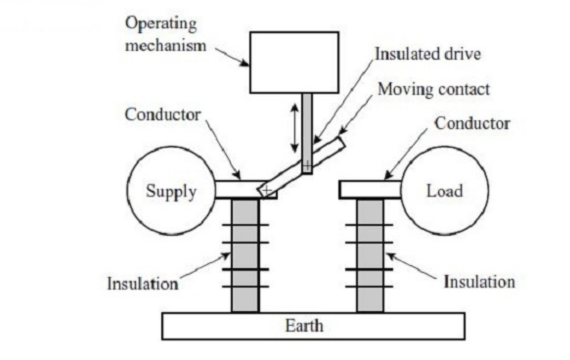
How Switchgear Works
· Basic Operation and Principles
Fault Detection
You depend on switchgear to constantly check the electrical parameters within your system. As a result of overcurrents, short circuits, or ground faults, protective relays and sensors detect changes in current and voltage.
In the case that the protective relay identifies an abnormal condition, it triggers a signal to the circuit breaker to execute the protective action. This quick identification enables you to mitigate possible harm to your machine and safeguard everyone around it.
Circuit Interruption
On receipt of the signal from the relay, the circuit breaker goes to work. You notice the circuit breaker opens its connections to cut off the supply of electricity. Hence the faulty section of the circuit can be avoided.
This interruption saves additional losses and isolates the fault, thereby minimizing its effects on the rest of the system. This interruption must be fast and efficient, as the protection depends on the speed at which it intervenes to prevent the incident.
Isolation
After the circuit interruption, you can isolate the faulty section with the help of isolators for either maintenance or replacement. Isolators afford some degree of physical separation and are used to give a clear indication where the circuit is interrupted before any work is done.
This step is crucial since it is unadvisable to have a system turn on while one is repairing it. More from storage; you can have isolators locked in the open position as further insurance.
Fault Clearance
With the faulty section isolated, you can now clear the fault. This includes examining the affected parts, resolving blown fuses or tripped circuit breakers, and verifying proper connections. It is your aim to return to normal working as soon as possible with the minimum of further complications.
System Restoration
After the fault has been cleared and the repair is done, you can then bring the system back to normal operation. This includes the action of closing the isolators and placing the energy back into the circuit. You double check all components to ascertain that they are in the correct order and that the system is stable before restoring full power.
It is crucial to check and maintain your switchgear components to guarantee they perform optimally during this process.
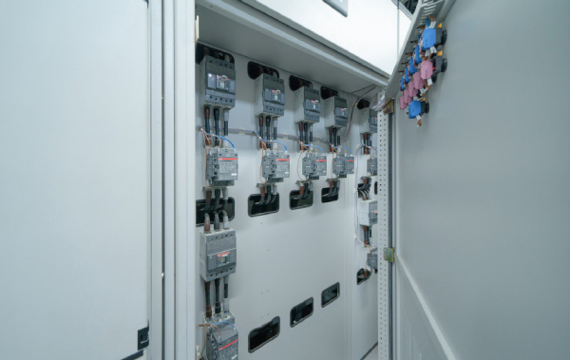
Key Functions of Switchgear
Fault Detection
You use switchgear to identify faults in your power distribution network mentioned above. It constantly measures parameters such as current, voltage, and frequency that are being supplied to the circuits. It gets tripped whenever it detects an overcurrent or a short circuit and initiates other protective devices like relays and circuit breakers.
This early detection is important in order to avoid major losses in your equipment and safeguard your employees. This way you will avoid situations with system failures and allow to provide uninterrupted power supply.
Circuit Isolation
In case of a fault occurrence, you require switchgear for isolating the faulty portion of the circuit. Switchgears present in the circuit breakers open to ensure that the current does not spread to cause more severe harm. You then use isolators to physically switch off and isolate that part that needs some working on or replacement.
This isolation process helps you carry on with the rest of the system while you sort out the problem. Proper isolation also prevents accidental energizating of the faulty section and, therefore, increases the safety of your maintenance personnel.
Load Management
Switchgear assists you in organizing the distribution of electrical loads in your circuit. You can regulate the flow of such current and ensure that certain parts do not receive more than they can handle.
You can switch off some lines while making others available as more employees work on the affected gear or during a power failure. Proper load management improves the capability and dependability of the distribution network and minimizes power failures and instabilities.
System Protection
You rely on switchgear for protection of your power distribution network against different electrical abnormalities. It shields your equipment against electrical risks as it rapidly identifies any abnormalities, thereby avoiding mishaps and guaranteeing constant power supply. Switchgear also protects your personnel in that it offers safe isolation points and reduces the risk of energizing equipment while working on it.
Furthermore, it assists you in adhering to safety requirements and guidelines so that you can effectively protect and manage your electrical system. Switchgear serves as a means for guaranteeing the durability and safety of a power distribution network.
Monitoring and Control
You can use switchgear to efficiently monitor and control your power system. It enables you to detect potential problems with electrical parameters and schedule the necessary actions in a timely manner. It also allows you to remotely operate circuit breakers and isolators and, thus, increase the controllability and dynamism of the switchgear.
This capability is especially relevant to large or complex power networks; precise, instant control is necessary to avoid blackouts and enhance system efficiency. Switchgear, on the other hand, offers one a better form of control in managing the distribution of power.
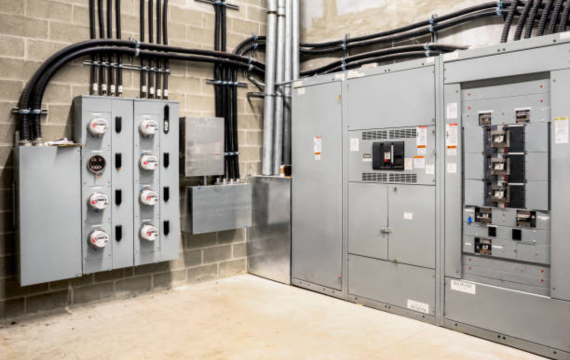
Types of Switchgear
Let’s look at some of the most common types of switchgears based on different categories:
· Based on voltage Levels
Low Voltage (LV) Switchgear
You utilize low-voltage (LV) switchgear for electrical systems that are at voltage levels of 1000 volts or less. LV switchgear is made up of circuit breakers, fuses, and contactors that protect and regulate circuits in residential, commercial, and industrial purposes. With LV switchgear, you can rest assured that electrical supply in your building or facility will be safe and efficient.
It helps you control loads, safeguard apparatus from overloads and short circuits, and ensure a continuous power supply. LV Switchgear is used in electrical everyday operations, giving you control and protection for low voltage operations.
Medium Voltage (MV) Switchgear
Medium voltage (MV) switchgear is used in electrical systems with voltage ranging between 1,000 volts and 35,000 volts. MV switchgear finds application mostly in industrial facilities, commercial complexes, and utility substations. Circuit breakers, disconnectors, and relays are some of the parts that make up this element because they assist your electricity delivery infrastructure.
MV switchgear makes it easy to isolate faulty sections of a power system, safeguard electrical equipment, and also helps in controlling power supply. If you use MV switchgear, you can keep your medium-voltage systems in excellent condition and avoid service interruptions and operational hazards.
High Voltage (HV) Switchgear
High-voltage (HV) switchgear refers to electrical systems that operate at voltages equal to or greater than 35,000 volts. HV switchgear is necessary for transmitting and distributing electric energy over large distances and is applied in power stations and substations. Some of these are the gas-insulated switchgear abbreviated as GIS, the air-insulated switchgear abbreviated as AIS, and the vacuum circuit breakers.
HV switchgear enables you to manage and safeguard high-voltage facilities that are used in transferring power to normal users. HV switchgear enables you to accommodate high-voltage electrical networks, disconnect faulty circuits efficiently, and ensure the stability of your systems.
· Based on Insulation Medium
Air-Insulated Switchgear (AIS)
You have air-insulated switchgear (AIS) because it is easy to use and you require a reliable switchgear system. AIS employs air as the medium of insulation to avoid electrical faults among the electrical parts. These switch gears are used in indoor applications as well as in outdoor applications.
You like AIS because it is cheap and does not need any specifics in the handling of insulating materials. You can conveniently inspect and get access to components to perform repair and replacement because of the open design. AIS is characterized by its larger size in comparison with other types of switchgear, so it is necessary to provide enough space for the installation.
Oil-Insulated Switchgear
You turn to oil-insulated equipment when you want higher arc-quenching capabilities as well as adequate insulation. Here, the working medium is both an insulating material and a coolant, and it is called oil. The oil can assist you to snuff out arcs created when circuit breakers work and thereby protecting your system.
Outdoor installations are one of the primary applications of oil-insulated switchgear, the other being high-voltage use. But you need to pay much attention to the maintenance and traits of the oil to avoid leakage and pollution. The switchgear must be efficient and safe as the result of regular testing and purification of the oil.
Gas-Insulated Switchgear (GIS)
You select gas-insulated switchgear (GIS) due to its size and the fact that it is known for its high degree of reliability. GIS uses sulfur hexafluoride (SF6) gas as the insulating medium, and by using SF6, you can get better insulation and arc-quenching performance. This makes GIS suitable for implementation in urban areas and indoors where space is a restricted resource.
GIS is also less demanding when it comes to maintenance and service, and its service life is longer than many other types.
However, SF6 gas treatment is not very easy, as precaution must be taken while handling this gas because of its high greenhouse effect. While benefiting fro, GIS, the proper handling and disposal of gases should be done diligently to reduce the effect on the environment.
· Based on Assembly
Indoor Switchgear
You apply indoor switchgear for application in buildings and other enclosed environments. Indoor switchgear is built in a way that it cannot be affected by issues such as rainfall, dust, or fluctuating temperature. It is preferable to use in business premises, factories, and workshops together with storages where conditions can be regulated.
Basically, indoor switchgear is compact in design, as the space is fully utilized when the switchgear is mounted.
Outdoor Switchgear
You use outdoor switchgear for external electrical installations that are subjected to weather conditions. Outdoor switchgear is designed to operate in extreme weather conditions such as rain, wind, and variation in temperatures.
This type of switchgear is normally applied in substations, utility distribution systems, and areas that cannot accommodate indoor units. Outdoor switchgear consists of strong cases that shield components from adverse weather conditions.
Metal-Clad Switchgear
For increased safety and dependability, you opt for metal-clad switchgear. Metal-covered switchgear is made up of enclosed compartments in which the primary parts are divided by metal walls. This design offers excellent prevention against electrical faults, arc flashes, and external contaminants.
It can be used indoors or outdoors, depending on the requirements of the user. It is commonly used in power plants, data centers, and other large industrial uses.

Switchgear Applications
Power Generation
In power generation, you employ switchgear to control and protect electrical flows from stations that generate electricity. It aids you in regulating power from generators to customers and guarantees that the absence of the expected current is correctly identified. In this case, switchgear is very vital with regard to the electric supply’s reliability and stability.
It allows you to safely isolate and preserve apparatus, control loads, and guarantee that produced energy is effectively and securely returned into the grid.
Power Transmission
In the field of power transmission and distribution, switchgear acts as a control and protective apparatus for high-voltage transmission cables. You use it to regulate the distribution of electricity over large areas from power stations to substations. Switchgear assists you in identifying the problematic areas so that they will not bring harm to the transmission lines
Also manages to provide stable power supply. You can manage the on and off of the transmission line and equipment, which is crucial for the stability of the transmission system.
Power Distribution
You rely on switchgear for power distribution to make sure that electricity is safely and effectively transmitted to consumers from the substations. Switchgear assists you in controlling the distribution of power, identifying faults, and isolating the affected area or section.
It enables you to continue delivering power to domestic, commercial, and industrial customers even as you limit the effects of electrical failure. The right distribution switchgear ensures that electricity is supplied in a safe and efficient manner to parts of the network.
Industrial Applications
In industries, you utilize switch gears to control and protect the electrical distribution networks in production facilities and complexes. Switchgear enables you to influence the operations of equipment, regulate load, and protect apparatus from electrical abnormalities.
It also enables you to protect some areas of the electrical system for service without having to shut down the entire system. If you invest in switchgear, you can improve safety in your industries and guarantee uninterrupted, effective functioning of your equipment.
Commercial and Residential Applications
In commercial and residential areas, to control and protect electrical systems in buildings and homes, you employ switchgear. It also assists in controlling the delivery of power, protection and isolation of flaws, and command of different electrical appliances and networks. In the commercial application, switchgears provide support to lighting, HVAC systems, and other crucial loads.
It provides safety and reliability in power feeding throughout the house in residential premises. The reliability of these switchgear plays a crucial role in the electrical safety aspect of day-to-day applications.
Specific Uses (for example, renewable energy, marine)
In special applications like renewable energy and marine environments, you employ switchgear designed to address certain operational and environmental conditions. In renewable power systems such as solar or wind systems, switchgear controls the flow of such types of power into the electricity grid system.
Marine switchgear is specified to operate in harsh marine environments and is used in shipboard electrical systems. The switchgear for these applications is designed to make the power systems reliable and efficient to serve the specific requirements of such conditions.
Standards and Regulations
· International Standards
IEC (International Electrotechnical Commission)
IEC set standards and regulation for switchgear on an international scale. The IEC offers a broad range of standards on design, testing, and operation that assist you in verifying your switchgear in the global market.
Staying abreast with the IEC standards ensures your switchgear conforms to accepted global standards, hence ease of compatibility and safety in various settings.
IEEE (Institute of Electrical and Electronics Engineers)
When you apply IEEE standards, you get comprehensive guidelines and measures on electrical and electronics systems. Design and testing standards of switchgear, together with the performance of the switchgear, are established by IEEE.
When you adhere to the IEEE standards, you guarantee the quality and reliability of the switchgear up to international standards.
National Standards
ANSI (American National Standards Institute)
There are national standards such as ANSI which is used by United Statesgovernemnet to ensure that switchgear meets the safety and performance standards of the country. ANSI standards give recommendations for the design, installation, and testing of electrical equipment such as switchgear.
Local StandardsAustralian Standards (for instance)
When you are in a certain country, such as Australia, you have to observe the Australian rules of law as you are in the region. Australian Standards are some of the standards that give necessary guidelines for the design, installation, and performance of switchgear installation conditions in Australia.
Conclusion
To enhance power management, it is vital to know the kinds, uses, and purposes of switchgear. Compliance with the existing standards in the systems provides safety and reliability that facilitates efficiency in various electrical systems and conditions.




